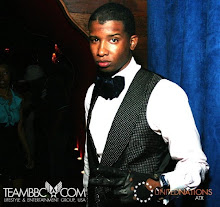
The Cut
Crucial points affecting the cut of a good pair of trousers are the size of the wearer's stomach and behind, the length of his legs, the desired height of the waist and the width of the trouser bottoms. If you have a flat stomach you have a wide choice in the cut of the waist area. Slender men who do not like front pleats will look good in a pair of trousers cut to fit close to the stomach. If they do like pleats, one pleat to each trouser leg is best. The pleats will ensure that the trousers are still comfortable when they are sitting down, and will conceal anything they have in their pockets. If you are rather large around the waist, then a pair of trousers tapering slightly downward will be best, since straight-cut trousers will quite obviously end in disproportionately wide trouser bottoms.
The Waist Area
Pleats are there for drape and comfort; they give necessary roominess. Trousers with no pleats, clean fronts allow a neater fit. If you cannot quite manage without pleats, trousers with one pleat to each leg provide a neat and comfortable fitting. However if you prefer a more generous cut, trousers with two pleats offer a larger, baggier, and more comfortable fitting. A man with small hips and rather flat behind will look good in pleated trousers.

The Rise
The rise, the distance from crotch to waistband, has to allow you enough room. The waistband should situate itself just below your navel, not down on your hips. People have always worn their pants at the natural waist.
The Cuffs
Cuffs are an optional fashion idea. They look appropriate with suits, sports jackets, and blazers alike. They not only give the suit a finished appearance but their added weight makes the trousers hang better. However if you do not like cuffs, there is no need to have them on the trouser, particularly if you prefer trousers without front pleats, since these look better without cuffs in any case.
Rather short men can also have their trousers cuffed. The difference between cuffs for a short man and for a man a few inches taller is the recommended width. While the cuff for a man of average height now measures from one and three-quarter inches to two inches, a short man will do better with a narrower cuff - about one and a quarter to one and a half inches
The Length
The proper length for trousers is a full break or slight break in the crease. A full break means trousers are hemmed to reach the top of the heel of a standard dress shoe, naturally breaking over the front of the shoe. Trouser break is not mandatory. Some customers often request a slight break. So it is all a matter of taste.





No comments:
Post a Comment